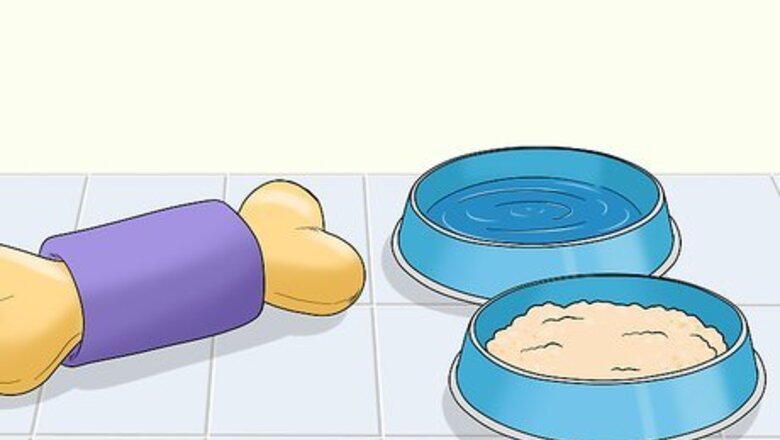
views
Quieting the Puppy
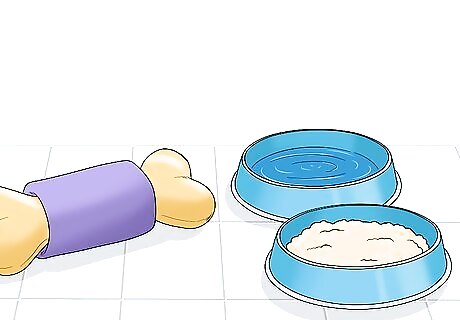
Make sure your puppy's needs are met before you leave it. If your puppy is hungry, uncomfortable, bored, or restless, it will be a lot more likely to cry when you close the crate door or go back inside. To avoid that, make sure it's had plenty of food and water, attention, exercise, and potty breaks. Also, check that you'll be keeping the puppy in a comfortable environment that's not too hot or cold. If you'll be keeping your puppy in a crate, plan potty breaks every few hours, based on the puppy's age. If you work outside of the home and you can't exercise the dog as much as you want, consider hiring a puppy sitter to come by each day to let the puppy out and give it some attention.
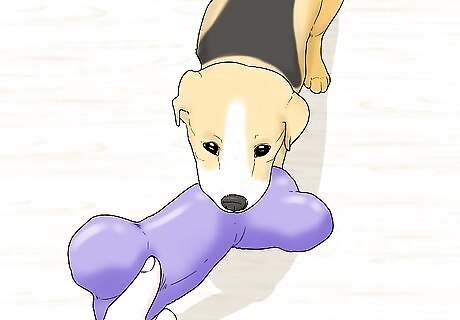
Give the dog a treat or toy when you put them in the crate or outside. To help your dog associate its time outside or in the crate with something positive, try giving them a tasty treat each time you leave them. You could also leave them with a durable toy—just make sure it doesn't have any squeakers, buttons, eyes, or other pieces the dog could pull off and potentially choke on. Put a comforting item, like a blanket or T-shirt with your scent on it, in the crate or in your dog's bed outside. For very young puppies, it can be comforting to put a ticking clock nearby, since it will remind the puppy of its mothers heartbeat.
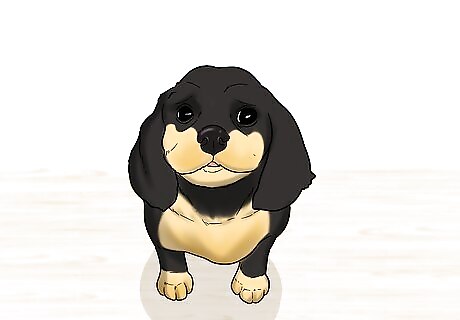
Do your best to ignore any whining or crying. It can be really hard not to go to your puppy if it starts whining—after all, puppies are so precious and little! However, if you comfort your puppy while it's crying, it will learn that's what it takes to get your attention, and the next time, it will whine longer and louder to get whatever it wants. When you ignore the puppy's cries, it should learn quickly that this isn't an effective way to get your attention, and it should lessen after a few days. If you have your puppy in a crate and you think it might need to potty, say the word you've associated with potty training, like "outside." If the puppy gets more excited, wait until it stops whining for a moment, then take it out and go straight to the puppy's potty spot. After it has a chance to go, bring the puppy right back in and put it in the crate. Tip: Consider wearing earplugs for a few nights if the puppy's cries are keeping you from sleeping.
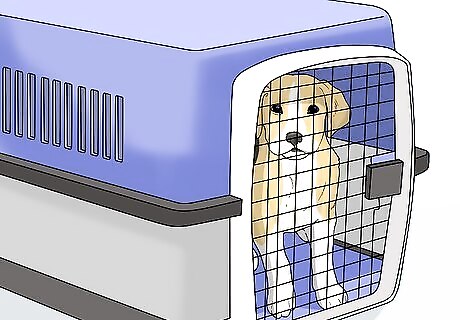
Do not punish the dog for whining. No matter how frustrated you feel about the puppy's whining, don't yell at it, hit it, or bang on the door or the crate. Giving the puppy any attention at all while it's whining will reinforce the behavior, even if it's negative attention. Remember, even if it's really hard for a few days, ignoring the puppy's cries is the best way to stop the behavior in the long term.
Tiring Your Puppy Out
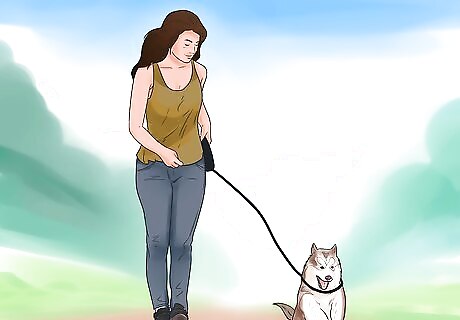
Walk your puppy regularly. Aim for at least two daily walks with your puppy. They don't need to be long, but they should reasonably tire out your pup. Just make sure the puppy is getting enough daily exercise based on its size and energy level. For instance, you might go for a 15-minute walk in the morning, then another in the evening after you get home from work.
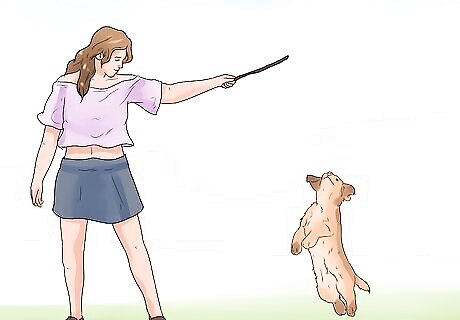
Play with your puppy. A bored dog will take out its energy in some other (undesirable) form, like whining, crying, or destroying things. At least twice a day, get your puppy engaged in an active game like playing fetch, keep away, chase, tug of war, or any other game your puppy loves to play. In addition to getting necessary exercise, the puppy will love the attention it gets from you. The younger the dog is the shorter your play and exercise sessions have to be but remember to increase the frequency of play or walk time as the puppy gets older.
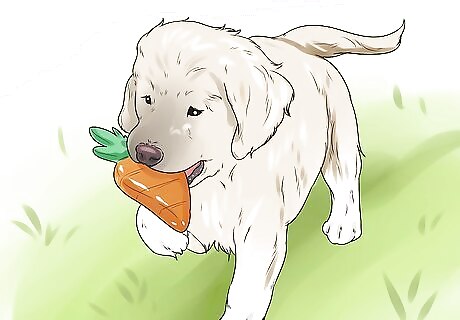
Give your puppy toys to play with. You want your puppy to be able to amuse itself when it is alone in the yard. Supplying plenty of toys will hopefully distract your pup from the fact that it is alone. Supply a variety of types of toys. Balls, squeaky toys, and treat-dispensing toys are all favorites for puppy playtime. These types of toys can help to distract a puppy from being sad it is alone while stimulating its natural inquisitiveness and desire to chew. Be sure not to leave your puppy unsupervised with any toy with small parts, like a toy with a squeaker or a stuffed animal with button eyes. The puppy could chew these off of the toy, and they could be a choking hazard.
Practicing Being Alone
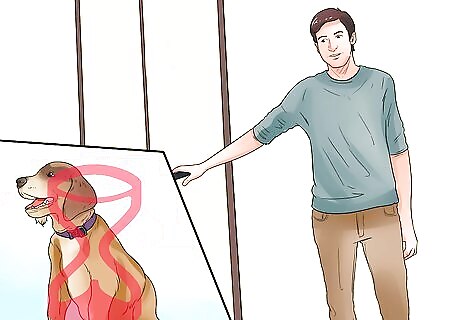
Practice letting the puppy be alone. Whether inside or outside, you'll need to get your puppy used to the fact that you won't be around all the time. You can practice indoors by leaving your puppy in one room and leaving for a few minutes, then returning. Then begin putting the dog outside for short periods of time, one to five minutes to start. You need to accept that the dog will probably cry and make a fuss while it is outside. Only leave a dog outside if you have a safe and secured fenced-in area. You must train the dog that nothing good will happen when they cry. Only let the puppy in when it is quiet and (preferably) lying quietly. If you give in and go out with the dog or allow it to return inside when it is whining, then you are giving positive reinforcement to the unwanted behavior. Leave your puppy with a distraction, like a Kong toy stuffed with wet food, to keep them occupied and to help them associate the yard with positive things.

Give your dog praise for good behavior. This is a big key to training a dog. Once an allotted amount of time is up (remember to start with small time increments), go outside and praise the dog profusely with attention and petting. Maybe even give the pup a treat. The dog will eventually make a connection that if it is quiet and well behaved outside, it will be rewarded for that behavior.
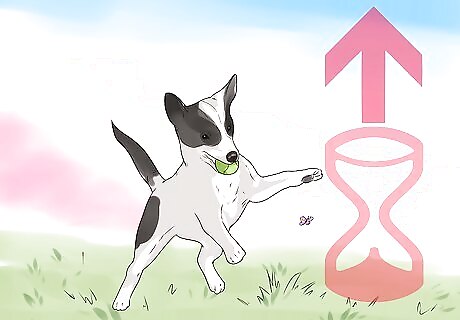
Slowly increase the puppy's alone time. Continue the training by lengthening the time outside until the dog remains quiet outdoors for at least an hour (as long as the weather is nice). Now the dog should be able to better deal with the separation anxiety when left outside or alone. Hopefully the pup will just quiet down and take a nap instead. Make sure the puppy always has fresh water available.

Consider use of a calming product. There are calming products available to help puppies with being alone. For instance, the dog appeasing pheromone (D.A.P.) has been shown to calm puppies in dog obedience classes. These come in collars, sprays, wipes or diffusers.
Crate Training Your Puppy
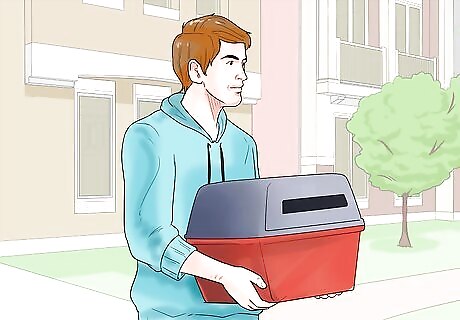
Begin crate training your puppy. It is very important to use a crate inside the house or a dog house, igloo, or some warm, comfortable shelter outside where the dog can rest and feel secure. Put the pup’s bed or blankets, as well as its toys, into the shelter so the puppy will recognize the space as its own. Recognize that it may take some time for this new place to seem like home to your dog. Take some time to gently teach them to go inside it. Any crate or kennel needs to be big enough for the dog to stand normal without a hunched back and to allow it to turn in a circle without being cramped.
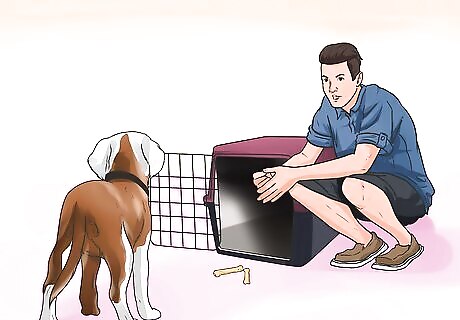
Entice your puppy into the crate. Start by leaving the door open and putting a few of its favorite treats inside toward the back of the crate or kennel. As as the puppy goes inside to eat the treats, say “kennel” and shut the door gently behind it. After the dog has finished the treats, open the door and give it praise. When you shut the crate and the puppy is quiet, make sure give them lots of praise. This helps the pup learn that being quiet and not whining is a positive way to get attention. Put the puppy's food and favorite toys in the crate, making it a fun environment with positive associations.
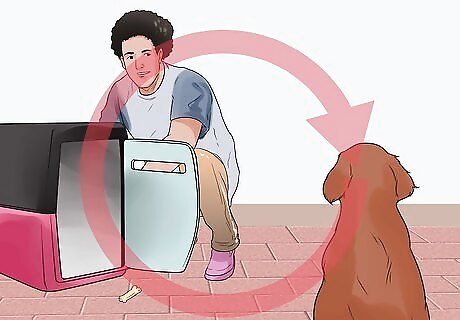
Repeat the crate enticement. Do this a few more time over the course of a couple of days gradually lengthening the amount of time the puppy is in there with the door closed. Never let him out if he starts to whine or cry; otherwise he will think that is what gets him out of the crate. Wait for him to be quiet before you spring him from the crate.
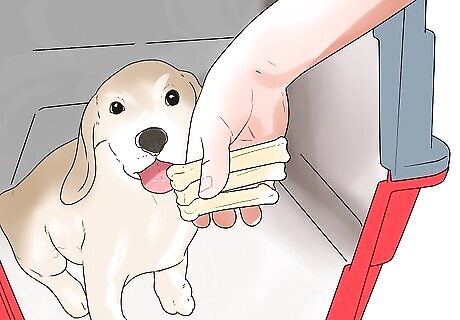
Treat the crate nonchalantly when you put the dog in it. When you crate or kennel your puppy when you leave the home, never make a big deal out of it. Give the pup the usual crate or kennel command and walk away as normal. This way the dog won’t associate a bunch of fuss with you leaving the house. Remember to leave them with distraction like a food-stuffed Kong to divert their attention away from being crated. When you return, don't let the puppy out of the crate right away. Do a few things first, and wait until the puppy is being quiet to let them out. This teaches them to be patient as well as removing the direct link between the crate and you leaving the house.
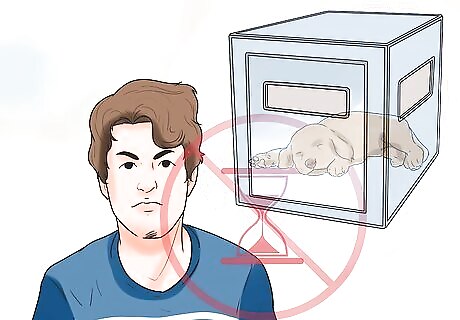
Never use the crate or kennel for punishment or the puppy will resent the crate. Never leave a puppy under two months of age in a crate longer than two hours or under six months of age in a crate or kennel for longer than four hours. They can’t fully control their bladders for more than that time period. As for older dogs, aim to only keep them in their crate for 4 hours. Its cruel to keep them confined for much longer than that time.


















Comments
0 comment